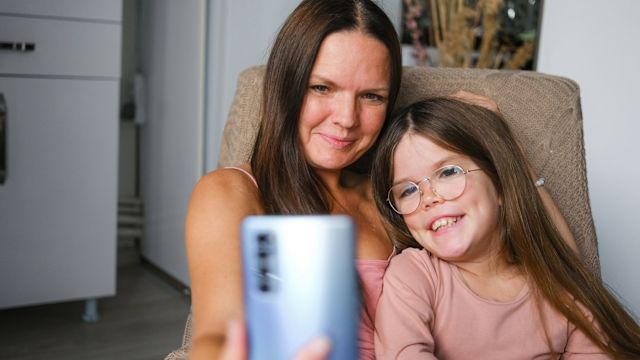Updated on October 1, 2024
Achondroplasia is a genetic disorder that impairs the normal growth and development of a person’s cartilage and bones. People with achondroplasia will have short stature, and often have shorter arms and legs. A larger head and prominent brow are other common features of achondroplasia. A diagnosis can be made before a person is born or during early childhood.
Support from parents and caregivers can make a meaningful difference to children and adolescents living with achondroplasia. If you are caring for a young person with this condition, the strategies below can help guide you in providing support.
Work with the child’s healthcare team
People living with achondroplasia have important healthcare needs. Delays in developmental milestones like communication and self-feeding are common during infancy and childhood. From young ages, people with the condition are at risk for a number of serious complications. These include complications that affect breathing, mobility, hearing, weight, and the function of the brain and nervous system.
Not every person with achondroplasia will have the same developmental delays or risk for complications. Everyone’s healthcare needs will be different.
- The best way to understand a child’s healthcare needs is to work with the child’s healthcare team. Children and adolescents with achondroplasia will typically work with a multidisciplinary team of healthcare providers who specialize in different areas of pediatric health.
- Beyond the physical symptoms and complications, achondroplasia often impacts other areas of a young person’s life, including emotional wellbeing, mental health, socializing, and school.
- It’s also important to remember that a child will have healthcare needs that are not specifically related to achondroplasia, such as immunizations and checkups with a pediatrician.
- Managing symptoms, monitoring for complications, and identifying—and addressing—healthcare needs can help a young person with achondroplasia live a full and healthy life.
Keep learning about achondroplasia
For decades medical researchers have been looking for therapies that can increase bone growth and height in people who have achondroplasia.
In 2021, the first medication to improve bone growth in children and adolescents with achondroplasia became available. It is approved for children and adolescents who have open growth plates. Growth plates are areas of bone that are still growing. Other medications are in development, with some available in clinical trials.
Be honest and supportive
It can be challenging to know how to talk to a child about achondroplasia. This is another area where a healthcare team can offer guidance, and it’s worth asking a child’s healthcare providers for advice on talking about the condition.
Tips for talking to a child about achondroplasia:
- Be honest with your child about the condition, especially when they have questions or notice differences about themselves.
- Use age-appropriate language and concepts when providing answers and explanations.
- Encourage your child to be honest about their feelings, thoughts, concerns, and their experiences in school and social situations.
- Recognize that it’s common for a person with achondroplasia to experience teasing or bullying, and teach your child that being treated this way is never okay.
- Support good self-esteem. Encourage your child to explore their interests and celebrate their successes.
Create a safe and accommodating environment
Adaptations can create a safer home environment—and an environment where a child feels more capable and independent. Examples of adaptations include light switch extenders, step ladders, using lower drawers and cabinets, lower closet bars, and level-style door handles.
Outside of the home, work with the child’s teachers, school administrators, coaches, and instructors to identify areas where adaptations or accommodations could benefit your child. An occupational therapist can also help you identify different ways that an environment can be adapted.
Take care of yourself
Being a parent or caregiver for a child with achondroplasia is challenging. It’s important to recognize the ways that this role impacts your health, your quality of life, and your mental wellbeing. It’s important to recognize and address your own needs.
Taking care of yourself also models good habits for a child. Good habits around eating well, staying active, keeping up with healthcare appointments, and living an overall healthy lifestyle will benefit your child as they take on more independence as a young adult.




